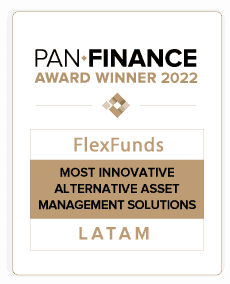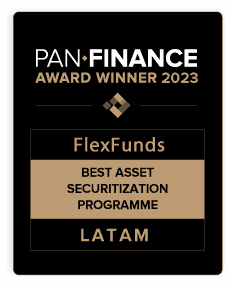- This article explains the main asset categories chosen by financial industry specialists for the asset securitization process, based on data from the II Annual Report of the Asset Securitization Sector 2024-2025 developed by FlexFunds in collaboration with Funds Society.
- The information is primarily directed at portfolio managers and investment advisors who are looking to understand the latest trends in asset securitization over the next twelve months.
- FlexFunds’ asset securitization program allows for the issuance of exchange-listed products (ETPs) that can enhance the distribution of investment strategies in international capital markets. For more information, feel free to contact our expert team.
Thanks to asset securitization various financial assets can be converted into negotiable securities that can be more easily distributed to investors.
This process also allows asset managers to obtain immediate liquidity for new operations by freeing up part of the initially immobilized capital.
Download our infographic
How exactly does asset securitization work?
Specifically, asset securitization is a mechanism that involves the creation of a special purpose vehicle (SPV) that acquires the corresponding assets and issues securities backed by them.
These securities carry different levels of risk and return. SPVs provide investors with a source of income derived from the cash flows generated by the underlying assets as well as their appreciation.
Structurally, securitized assets are grouped into a separate fund, isolating them from the rest of the originating institution’s activities.
What are the most securitizable assets?
In the II Annual Report of the Asset Securitization Sector 2024-2025, FlexFunds and Funds Society conducted a survey of 100 financial companies across 18 countries to analyze portfolio management experts’ expectations for the next twelve months.
Most participants came from Latin America (68%), North America (17%), and Europe (13%). Of the total, 47% represented small and medium-sized companies with fewer than 25 employees, and 68% of responses were tied to individuals working at companies with up to 100 employees.
One valuable conclusion was that five types of assets are the most appealing for securitization:
Real estate projects
First, with 18% of the votes, real estate projects stand out as the most securitizable asset class. Some of the main reasons include the tangible nature and perceived stability of real estate, with long-term appreciation potential. The ability of these assets to generate stable income flows and provide inflation protection is also highly valued.
Loans and contracts
Second, with 15% of the votes, loans and contracts were highlighted. By securitizing these types of assets, issuers can obtain liquidity, and portfolio managers and investment advisors can offer an alternative that may be more operable and accessible to investors.
Stocks
Third, with 14% of the votes, stocks were mentioned. The FlexFunds and Funds Society report indicates that this reflects the importance of traditional financial assets and the ongoing market confidence in them. The preference for stocks may also be driven by optimism about a potential economic recovery and the pursuit of higher returns.
Bonds
Bonds ranked fourth with 12%, showing they are still considered a reliable and secure option for securitization. Currently, with high interest rates and the strong likelihood of future rate cuts, fixed-income asset prices are expected to rise.
Investment Funds
Fifth, with 11% of responses, were investment funds, primarily due to the diversification and professional management these vehicles offer.
As explained in the downloadable report, the rest of the ranking was completed with derivatives (9%), commodities (8%), intellectual property (5%), currencies (4%), and other types of assets (3%).
“In summary, the survey results reflect a clear preference for the securitization of more traditional and tangible assets that managers are more familiar with, such as real estate projects, loans, contracts, and stocks. These assets are perceived as safer and more stable compared to more complex or volatile options like derivatives and commodities,” said the experts behind the report.
They also noted that the findings underscore the continued pursuit of safety and yield by investors in the current uncertain economic environment. However, the report also highlights the growing interest among asset managers in incorporating alternative assets into their portfolios as part of a diversification strategy aimed at higher expected returns or protection against inflation and market volatility.
It is worth noting that FlexFunds’ II Annual Report of the Asset Securitization Sector 2024-2025, developed with Funds Society, can be easily downloaded for free in just a few clicks.







